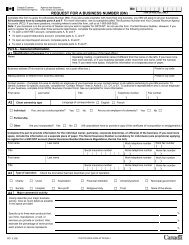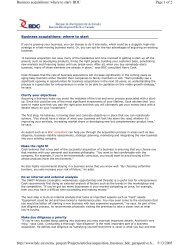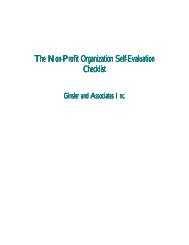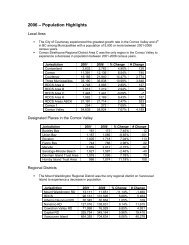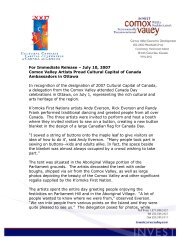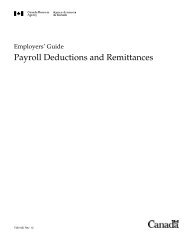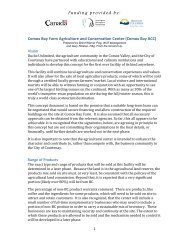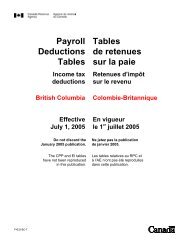qprev_HBB Manual 2.qxd - Small Business BC
qprev_HBB Manual 2.qxd - Small Business BC
qprev_HBB Manual 2.qxd - Small Business BC
Create successful ePaper yourself
Turn your PDF publications into a flip-book with our unique Google optimized e-Paper software.
(Variable cost per unit x Volume)+ Fixed CostsVolumeCalculating Break Even PriceFor example: A business’s fixed costs oroverhead for a year of planned operation is$20,000.The variable costs per unit sold (supplies andmaterials category of costs) are $5.00. The salesvolume expected for the first year of operationis 10,000 units.Fixed costs for overhead, one year: $20,000.00Variable costs per item: 5.00Volume, sales estimate projectedfor one year: 10,000.00Formula =($5.00 x 10,000) + $20,000= $7.00 per unit10,000“Rules of Thumb” in Setting PricesSome types of businesses charge prices accordingto certain “rules of thumb”:• Price is twice labour plus materials, or twicematerials plus labour depending on whichis higher.• Price is materials and labour plus 20per cent for fixed costs, plus 25 per centfor profits.(Please note that this method is notrecommended. Doing a calculation of prices toreflect accurate costs is preferable.)Calculating actual costs is the only sure way tomake sure your prices cover those costs. Labourand time expenses in a home-based business areoften not included in cost and price figures.Labour and time charges are covered partly in thecosts of production and partly as a salary in thefixed/operating or overhead costs. The chapter onFinances builds on the introductory costing andpricing information given here, providing sometips on each of the three main pricingapproaches.New business people with little experience mayset an initial price based on the market, and thenas experience grows, re-set prices according tocosts. These two aspects of price – what isacceptable to the market, and what the costs are –must both be considered. The choices that abusiness makes about its target markets and salesmake a big difference in pricing. For example, abusiness may make an early choice about whichof these two market segments to target – the“good value”, low end of the market, or the“quality conscious”, upscale market. In pricing,as in everything else in business, the customer isthe reference point.Setting pricesIn summary, the key factors to consider in settingprices are:• Marketing strategy and your immediate goals.• Competitors’ prices, and the market.• Market demand for the product and consumerbuying trends.• Need to cover costs and provide an adequateprofit.solutions for small business home-based business 47



